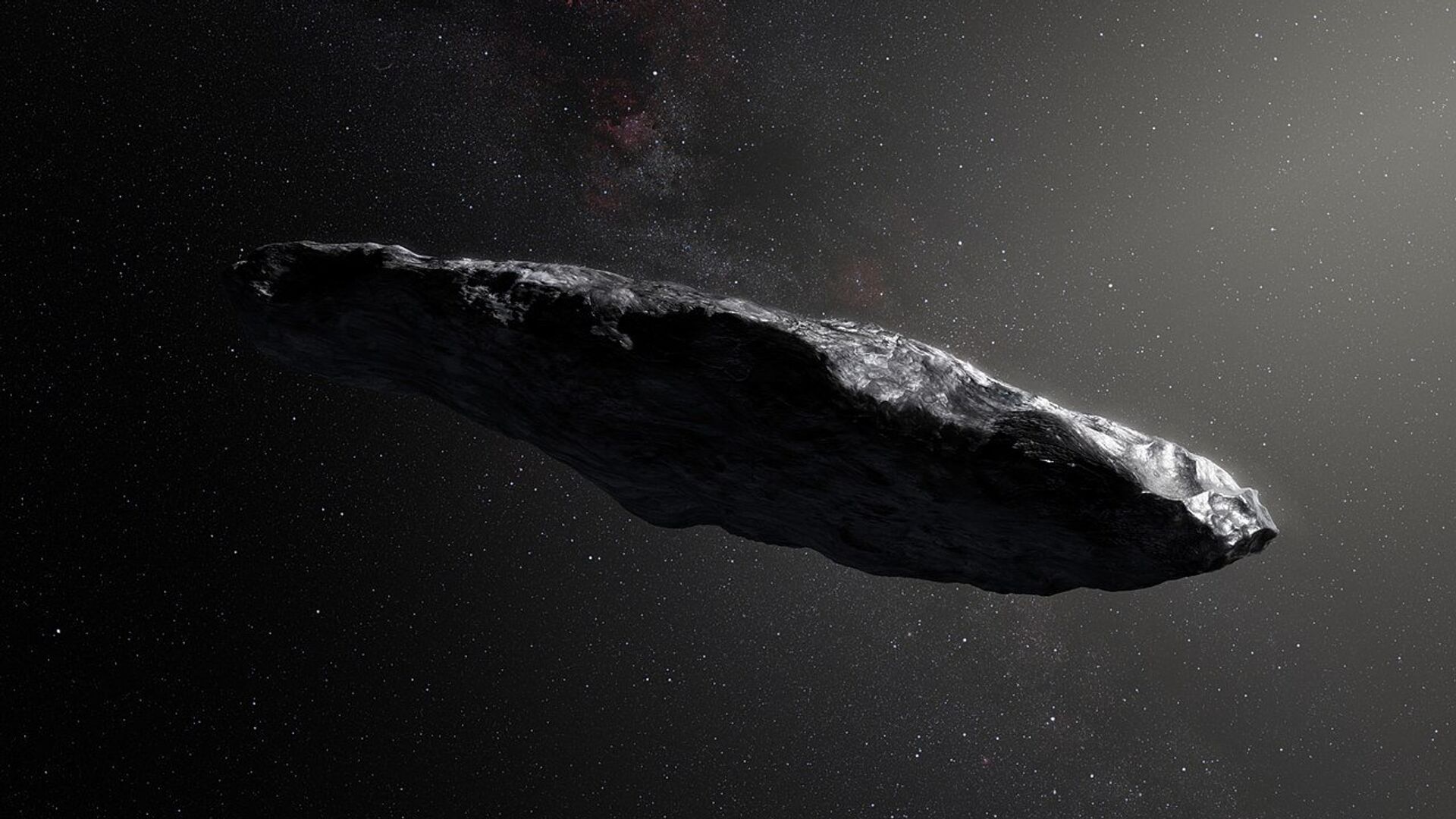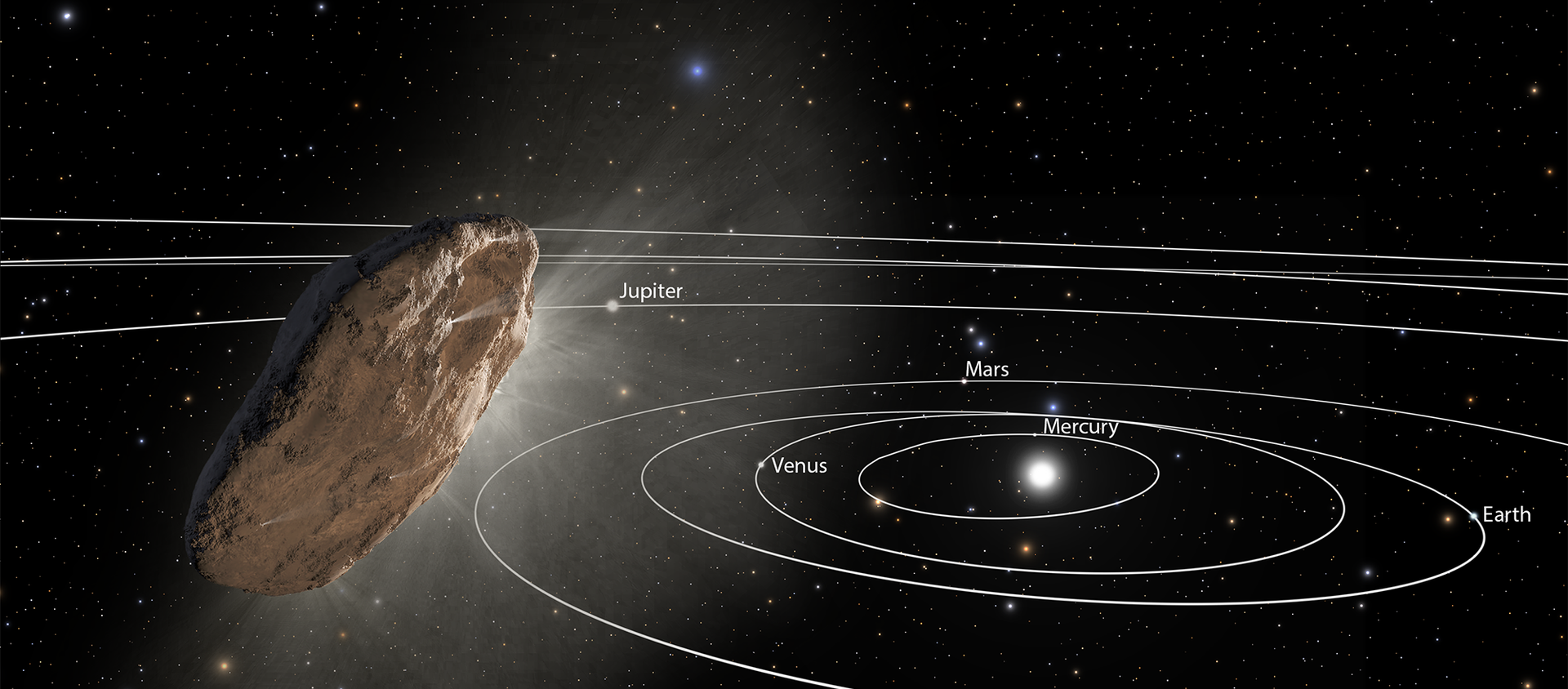https://sputnikglobe.com/20220211/spacecraft-from-earth-can-still-catch-up-to-oumuamua-study-suggests-1092939450.html
Spacecraft From Earth Can Still Catch Up to 'Oumuamua, Study Suggests
Spacecraft From Earth Can Still Catch Up to 'Oumuamua, Study Suggests
Sputnik International
While the team has already submitted a white paper to NASA's Decadal Survey, it remains to be seen if their proposal will be adopted. 11.02.2022, Sputnik International
2022-02-11T12:48+0000
2022-02-11T12:48+0000
2022-02-11T12:48+0000
science & tech
oumuamua
spacecraft
mission
study
https://cdn1.img.sputnikglobe.com/img/106585/09/1065850986_0:73:1280:793_1920x0_80_0_0_665e76d05314fc5e88e96e1275736739.jpg
A team of researchers has come up with a plan specifying how a spacecraft, if launched in the next few years, could catch up with an enigmatic interstellar object known as 'Oumuamua and snap a picture of it up close, Live Science reports.Originating from somewhere beyond our Solar system, 'Oumuamua passed by Earth in 2017 and is currently estimated to be somewhere outside Neptune's orbit, heading towards the Pegasus constellation, researchers from UK-registered non-profit Initiative for Interstellar Studies (i4is) together with their colleagues from the US and Europe propose that a spacecraft launched by 2028 could still catch up to that object.Under the so called “Project Lyra” proposed by the team, a spacecraft launched from Earth would swing by Venus and our planet, which would allow it to reach Jupiter with minimal fuel. Then, the craft would burn fuel to accelerate and slingshot past Jupiter toward 'Oumuamua at a speed of about 133,200 kilometres per hour.While the team has already submitted a white paper, NASA's Decadal Survey, it remains to be seen whether their proposal will be implemented.
https://sputnikglobe.com/20210317/not-an-alien-spaceship-scientists-unveil-new-theory-on-origins-of-interstellar-object-oumuamua-1082372614.html
Sputnik International
feedback@sputniknews.com
+74956456601
MIA „Rossiya Segodnya“
2022
News
en_EN
Sputnik International
feedback@sputniknews.com
+74956456601
MIA „Rossiya Segodnya“
Sputnik International
feedback@sputniknews.com
+74956456601
MIA „Rossiya Segodnya“
science & tech, oumuamua, spacecraft, mission, study
science & tech, oumuamua, spacecraft, mission, study
Spacecraft From Earth Can Still Catch Up to 'Oumuamua, Study Suggests
While the team has already submitted a white paper to NASA's Decadal Survey, it remains to be seen if their proposal will be adopted.
A team of researchers has come up with a plan specifying how a spacecraft, if launched in the next few years, could catch up with an enigmatic interstellar object known as 'Oumuamua and snap a picture of it up close, Live Science reports.
Originating from somewhere beyond our Solar system, 'Oumuamua passed by Earth in 2017 and is currently estimated to be somewhere outside Neptune's orbit, heading towards the Pegasus constellation, researchers from UK-registered non-profit Initiative for Interstellar Studies (i4is) together with their colleagues from the US and Europe propose that a spacecraft launched by 2028 could still catch up to that object.
"What we need is a photograph of it, very close, an in situ photograph," said Adam Hibberd, software engineer at i4is and lead author of the study. "And the only way we can do that is by sending a mission."
Under the so called “Project Lyra” proposed by the team, a spacecraft launched from Earth would swing by Venus and our planet, which would allow it to reach Jupiter with minimal fuel. Then, the craft would burn fuel to accelerate and slingshot past Jupiter toward 'Oumuamua at a speed of about 133,200 kilometres per hour.
"Jupiter has one-thousandth the mass of the sun — so it's much less massive — and you don't get quite as much, to use the expression, 'bang for your buck', but you do get there at fairly high speed," Hibberd explained.
While the team has already submitted a white paper, NASA's Decadal Survey, it remains to be seen whether their proposal will be implemented.
"We'll see what comes of that white paper," Hibberd said. "We're trying to get encouragement from the scientific community — after all, it would solve a lot of their questions."


